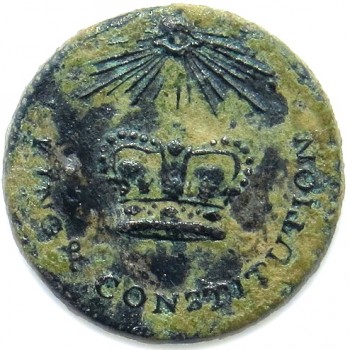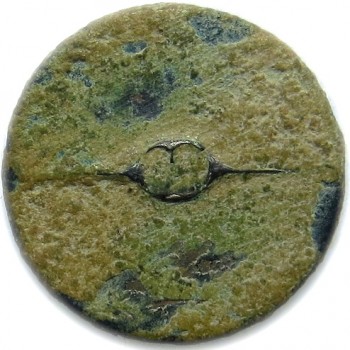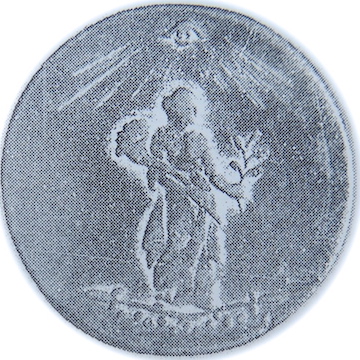Robert Scot introduced the Eye of Providence
for the Enlightened Visionaries Grand Architects Design
The hidden truth, I do not yearn to be like General Cincinnati, nor do I live on a farm as Dale & Bob. I never purchased or even wanted to purchase a Rooster at any point in my life. I even resist to this day my daughters constant request to get chickens for our yard; but unfortunately, I am the one out of our group everyday that is continuously up at 4:30-5:00 in the morning with the Rooster solving and writing the mysteries you get to read – RJ. Silverstein
Robert,
Due to my searching for backmarks I have paid for access to all of the major newspaper archives including 18th century. During the past several years, I have searched every single page that pops up with references form my complex searches, for any even slight refernces to GWIBs, even in the stolen clothing ads and jewelers ads etc, it is very telling that there is not even a single one in any of the period documents. That tells me that it was a secret then who made them, and that they were not sold thru commercial channels, probably sold in Lodges to approved members. They were NOT marketed. – Lt. Col Robert Milburn
Answer to GWI Makers in Reverse
The New Republic of America cannot not have a British or French birth certificate to reflect a foreign manufacturer on the backs of America’s first inaugural or New Nation Tribute buttons. The 1789 GWI & NNT tribute button’s reverse was purposefully unsullied of foreign dependency of production. Hence, Robert Scot no doubt-idly used his artisan associations of Scots living in England to achieve this goal. The English Artisans most likely were apprenticed, or associated at some point in time with his father’s (Artist University) George Scot’s Canongate lodge. These relationships amongst the artisans were close knit, and above the era’s politics of which country is fighting which country. Distinguished artisans of the era would automatically be apart of the Scottish-Rite lodges in England, and they would have facilitated Robert Scot’s request to have the dies stamped on planchets, and then returned on time for the celebration in 1789. Masonry and the lodges in England should be seen as an interwoven connection of communication, and a vehicle to use it’s network to get raw materials (Planchets) for the production of the GWI & NNT buttons. Hence, the making of these celebratory buttons would have been outside the advanced technical manufacturing of Birmingham commercial button makers.

GWI 24 Thank You, My Brothers
How Were They Sold
George Washington Inaugural and New Nation Tribute buttons were sold everywhere in the 13 colonies, but how? As noted above by Robert Milburn these celebratory buttons were not advertised in any of the 18th century garment magazine, clothing ads, or jewelry advertisements. This is because they were not associated with the mainstream commercial garment and button makers who promoted their line of clothing or special designed buttons through advertisement. George Washington inaugural buttons were noted in several cities newspaper accounts, and this alone could have provided the avenue of advertising for these celebratory buttons to the colonists. Word of mouth most likely communicated to each other and would provide an avenue to the people of interest so they knew how to obtain them through their local neighborhood Masonic lodges.
Yes, they were expensive. Yes, they were sold to everyone who could afford one. Yes, all of America’s Genteel was associated through their neighborhood lodges, and most likely purchased one as they do their normal lodge buttons. The GWI 24-A above, was a special button made for the British Scottish artisans who helped facilitate production for their American based Scottish-Rite brothers. This button was probably authorized by Robert Scot as a thank-you button of gratitude for their Scottish-Rite counterparts living in England who helped make the originals.
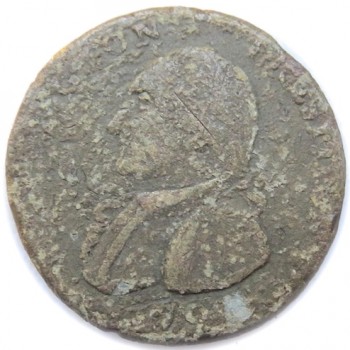
GWI 29
The Poor Man’s GWIB
Poor Man’s GWIB
Since, America was the New Republic of Equal Opportunity for all of it’s citizens, this did not address the problem of wealth disparity between the two classes. This New Era of Enlightened Ideals only offered the opportunity for all to be social and wealth climbers. So, what about the poor man or farmer who served in George Washington’s Revolutionary Continental Army? How can he afford the wealthy Genteel’s GWI or NNT button? Well we know for a fact from newspaper accounts that everyone rich or poor did have celebration in their hearts for the inauguration celebration, and in this instance wealth disparity would not find ground between the classes. The common man would and did find a way to show his love for George Washington just as proudly as the Genteel class did. It should be reasonably assumed that at first (in 1789), the commoners probably didn’t find a path as they did with GWI 29 in 1793. This momentum for commoners to spend money for tribute probably materialized over time and then by 1792 for Washington’s Second Administration they would join celebration mode equally to the Genteel’s of 1789. So, what avenues did the common man have without monetary means to show his new found patriotism for a New Republic in opportunity infancy?
Well, since the early 1970’s Diggers (Metal Detector enthusiasts) have continually found these homemade GWI 29 types in all 13 states, but didn’t understand it’s historical nature and association to history of what they actually represent to the lower class populace or common man. In this era, the worth of brass or copper coins were valued to a much higher degree then state issued paper money. Copper and other kinds of white metals, pewter, and lead was available to all colonists to make everyday necessity objects. So, an individual would have access to obtain a thin sheet of copper or some kind of Bathe-white metal from their local Coppersmith or even a maybe a Blacksmith. Using ingenuity the common person would use this thin metal to wrap a common 1793 Penny. This would make a kind of mold or repousse shell. They would then place the George Washington portrait cent to into the mold to closely form fit it. They probably worked on it with a small hammer or crimping tools to make the pattern clearer. Then they would remove the 1793 cent and this would produce a crude style mold which would be filled with liquid pewter or lead. For the shank, they would simply twist a small copper or metal (Iron) wire in a loop and and insert it to the back as the metal cooled in the mold. So, know you have it, American ingenuity with no class boundaries. This allowed a commoner to have the same kind of high quality artisan designed button without having to afford the high price of a GWI or NNT Gilt of Silvered brass button. Now even a poor man can show his appreciation and reverence with is head held-up high with a George Washington button pinned to his chest. ~ Real American Patriotism at our New Countries roots.
These Rare English Masonic buttons which depict Robert Scot’s “Eye of Providence”
demonstrate the Masonic Artist relationship tie in England.
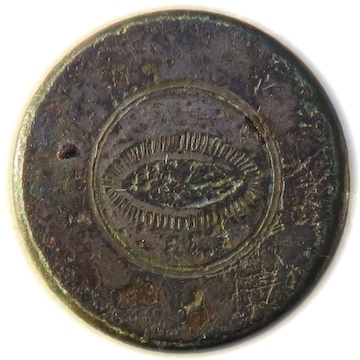
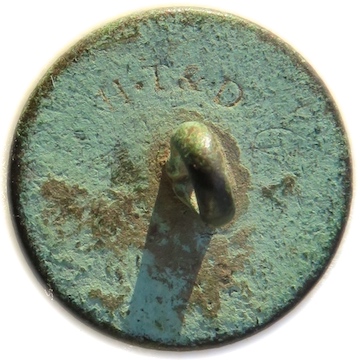
Hi Bob,
Tell me what you are looking at?
I have never seen this design button before (that means it is rather scarce), but what I view is a gilt button manufactured between 1797 and 1810 by Hammod, Turner & Dickinson. The Face bears a Radiant Eye of Providence which suggests it is as a Masonic related artifact. If I had to guess, I would say it may have been made at the Order of the London Masonic High Council, a specific influential Master Mason, or perhaps a Specific Lodge.
Widen your lens, you are looking at how the British Scots in the Masonic lodges in England used and adopted Robert Scot’s Eye of Providence symbol. Meaning they recognized his Scottish Royalty bloodline to Sinclair stature even though he is operating in America.
